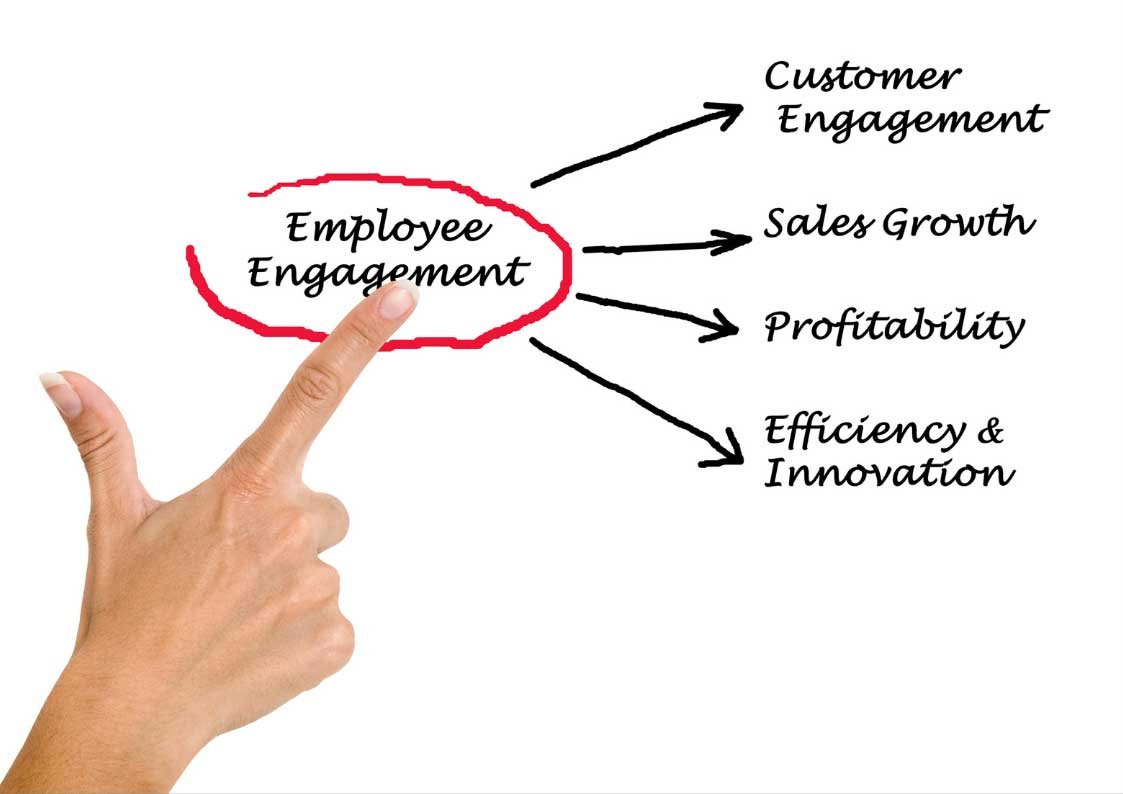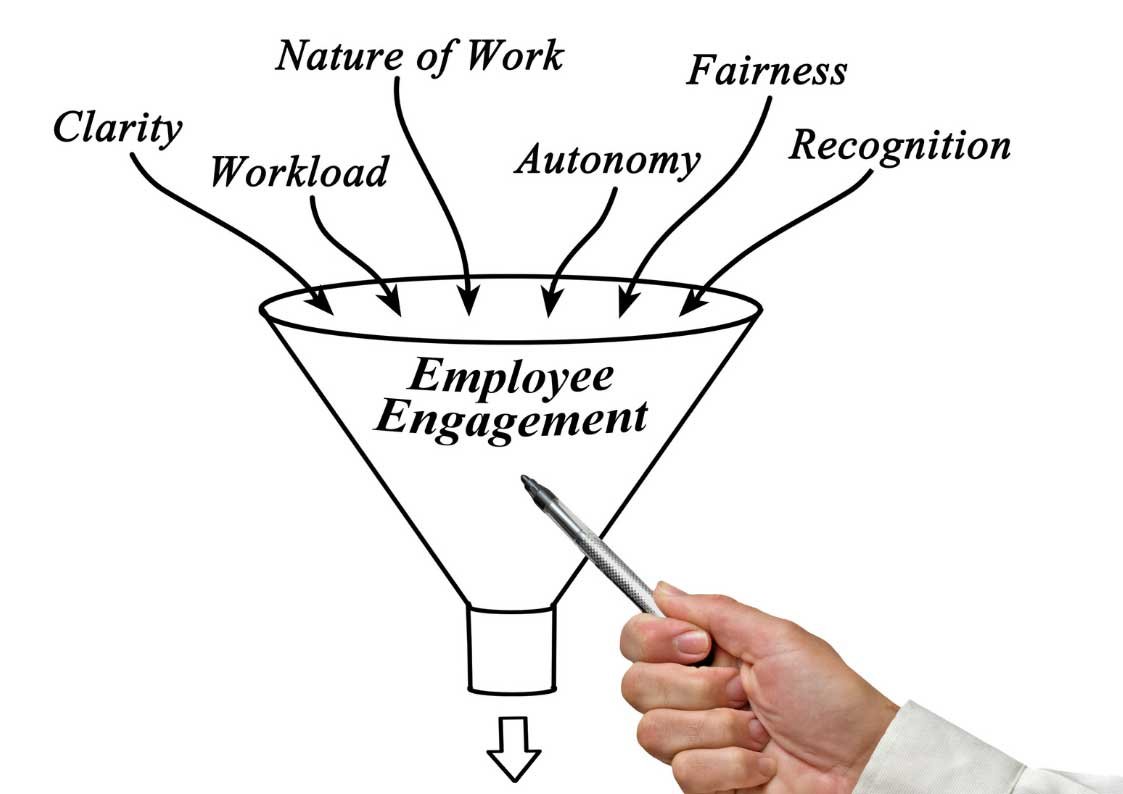What is Employee Engagement?
Employee engagement is the strength of an employee’s mental and emotional connection to their work, their teams, and their organization.
Employees who are invested in their company work harder, stay longer and inspire others to do the same.
There is a lot of information available on how to improve employee engagement, some of which are credible and some of which is not. HR professionals have heard a wide range of definitions of employee engagement. But, exactly, what is employee engagement? To truly drive employee engagement in your organization, you must first define and comprehend what it entails.
Employee Engagement Levels
Employee engagement assesses how employees feel about their workplace. Employees are divided into four major groups based on their perceptions of their workplace.
Employees Who are Highly Engaged
Highly engaged employees have very positive attitudes toward their workplace. Employees who feel connected to their teams, enjoy their jobs, and have positive feelings about your organization are more likely to stay and contribute to its success. These brand ambassadors recommend their company to family and friends. They motivate the people around them to do their best.
Moderately Engaged Employees
Employees who are moderately engaged see their organization favourably. They like their company but see room for improvement. These employees are less likely to ask for more responsibilities and may underperform. There is something about the organization or their job that prevents them from fully engaging.
Barely Engaged Employees
Employees who are barely engaged are uninterested in their workplace. They are typically unmotivated for their position and will only do what they can to get by, sometimes less. Employees who are barely engaged may be looking for other jobs and pose a high turnover risk.
Disengaged Employees
Employees who are disengaged have a negative perception of their workplace. They are disconnected from the organization’s mission, goals, and future. They are unconcerned about their position and responsibilities. It is critical to understand how to deal with disengaged employees so that their negative perceptions do not affect the productivity of those around them.
Why is Employee Engagement Important?
Employee engagement is appealing to HR because of its immediate benefits in employee retention, recruitment, job satisfaction, and happiness. But the benefits of employee engagement span much further than HR.
How Employee Engagement Impacts Employee, Team, and Business Success
When employees are engaged, discretionary effort goes up. Employees want to go above and beyond the basic requirements of their job. When leaders and managers channel that energy and effort in the right direction, employee engagement impacts a host of business outcomes.
Benefits of Employee Engagement
Increased Employee Productivity
Research shows engaged employees are 17% more productive than their peers. They’re more likely to work diligently and expend discretionary effort in their jobs.
Higher Employee Retention
Engaged employees don’t have a reason to look elsewhere for work. Engaged employees turn over less often because:
- Increased customer satisfaction: 72% of executives strongly agree that organizations with highly engaged employees have happy customers. Engaged employees care deeply about their jobs, and thus, customers.
- Lower absenteeism: When employees are committed to your mission, they’re going to show up. Highly engaged workplaces see 41% lower absenteeism.
- Better employee health: Engaged employees are less likely to be obese, less likely to suffer from chronic disease, more likely to eat healthier, and more likely to exercise. Having healthier employees positively impacts your bottom line.
- Decreased workplace injury: Employees who are engaged are more aware of their surroundings and can concentrate on the task at hand. According to research, highly engaged workplaces have 70% fewer safety incidents.
What are the Top Drivers of Employee Engagement?
Employee engagement drivers are items that have a large impact on employee engagement outcomes. They are the items you should take action on when driving employee engagement.
All drivers will have an impact on engagement; the key is to identify and address the drivers that will have the greatest impact on your organization. And then put in place strategic employee engagement activities to support those drivers.
Based on our employee engagement trends research, here are the top ten drivers of employee engagement.
There are a few key themes in this list that are strong indicators of employee engagement. They define what is essential to workplace connection and engagement.
Motivating work
Employees want to be challenged in their jobs. They want to be in charge of tasks that allow them to use their strengths and have access to opportunities to advance in their roles and careers. Organizational leaders and HR teams must match talent to roles that provide these aspects of an engaging job.
Inspiring teams and leaders
Leadership and team relationships are critical for engagement. Employees want to work for leaders and teams who prioritize people, value employee contributions, and demonstrate integrity.
Who Drives Employee Engagement?
Every person in your organization impacts employee engagement in the quality of relationships they build, their approach to teamwork, and general attitudes they bring to the workplace. Here is a breakdown of employee engagement roles:
The role of leadership in employee engagement
Employee engagement is promoted by organizational leaders. They are the most powerful campaigners and promoters of an engaged culture. When it comes to employee engagement, leadership buy-in is critical.
The role of HR in employee engagement
Human resources should take charge of employee engagement initiatives and hold teams accountable. This group works behind the scenes to ensure that everything runs smoothly.
How Do You Measure Employee Engagement?
Before you can improve employee engagement, you must first understand where you stand. How do you gauge employee satisfaction? Employee surveys are one of the most accurate and efficient ways to gain understanding.
How to Create an Employee Engagement Action Plan
The magic happens in an employee engagement action plan. The following are the five steps to developing an effective employee engagement action plan.
1. Review survey results
Take some time to delve into your survey results once they arrive. Examine the results for themes and patterns, as well as strengths and areas for improvement. Encourage managers to conduct results reviews with their teams.
2. Choose focus areas
After reviewing the data, select two or three key focus areas to investigate further. Prioritize focus areas based on the impact of that driver and the amount of effort required to move the needle.
3. Brainstorm solutions
After that, form focus groups and assign them to each target area for additional discussion and brainstorming. Focus groups should go over the data, identify potential problems, and brainstorm solutions. Then, turn your employee engagement ideas into actionable items.
4. Make commitments
Once you’ve settled on key takeaways and actions, it’s time to build out your action plan. Be sure to include commitments, owners, timelines, and measurable goals. By clearly outlining these areas, you can ensure your plan won’t fall through the cracks.
5. Communicate progress
Once you’ve created your action plan, the work isn’t done. Follow up on progress in the coming weeks and months. To have the greatest impact, keep these commitments top of mind throughout the year.
How Do You Build Employee Engagement?
You can’t improve employee engagement with one simple solution. Creating an engaged workplace requires a multi-pronged approach that is fueled by continuous improvement. Here are some tried-and-true methods for increasing employee engagement:
It’s time to get to work now that you understand what employee engagement is, why it’s important, and how you can make a difference.
If you want to know more about how to manage your business especially when it comes to managing your team and digital marketing, we recommend you partner with Ubique Digital Solutions. UDS is the all-in-one digital solution that will help you with strategising and planning your business moves and actions for improvement and better performance of your system – resulting in achieving your goals easier and faster. Contact UDS now!

















